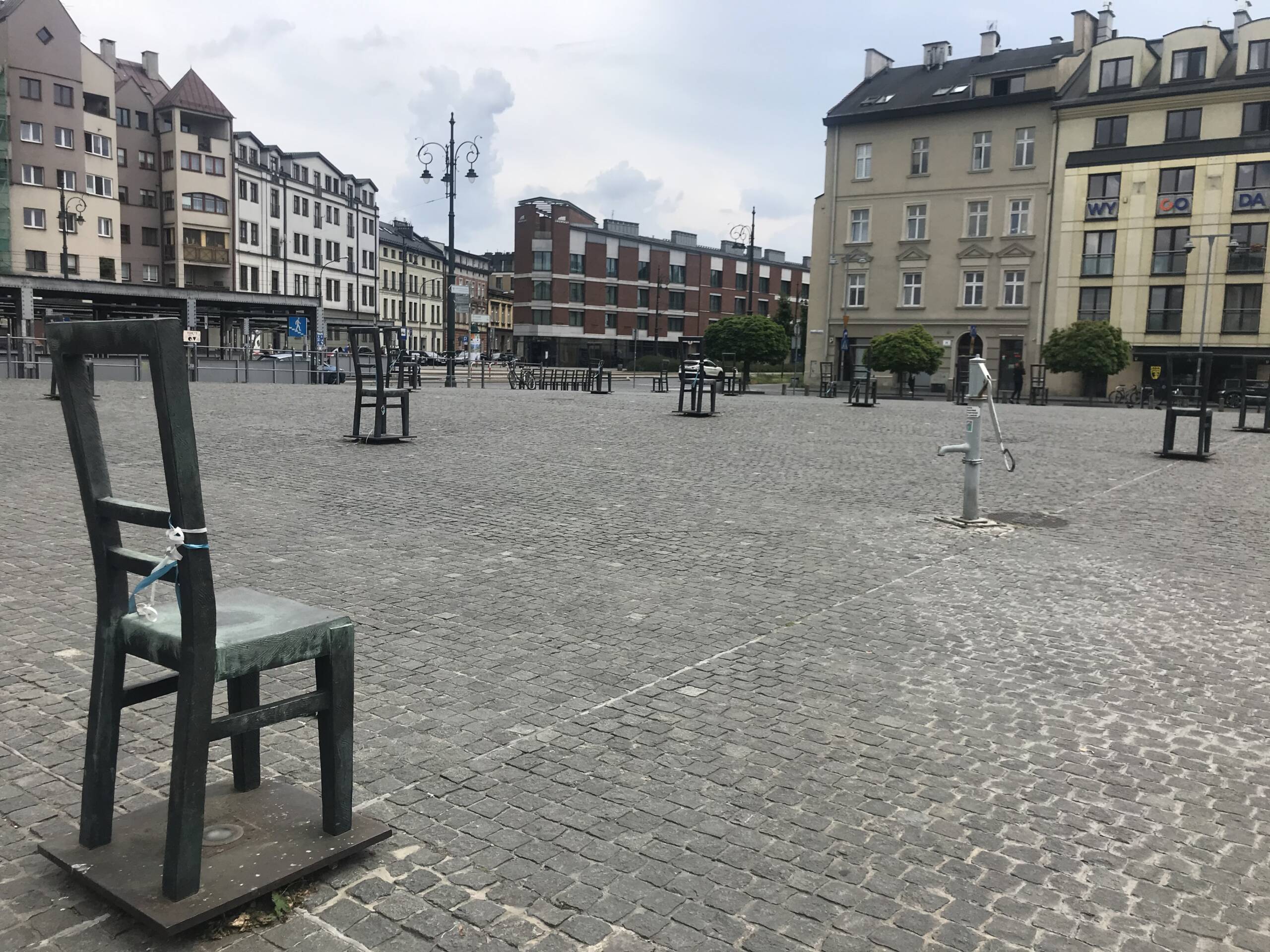From a Jewish Paradise to Nazi Concentration Camps
After spending two days visiting Auschwitz, the group travelled to Krakow where we had the opportunity to do a walking tour of the Jewish Quarter. A significant portion of what we learned concerned the Jewish community during the Renaissance period. Our first stop was the oldest synagogue in Poland, built sometime during the 15th century. After a fire destroyed parts of the building in the 16th century the Jewish community hired an Italian architect to rebuild it in the contemporary Renaissance style. Our guide explained how this indicated that Jewish people had both the money and desire to be involved in the cultural landscape of Poland. Additionally, we learned that in the 16th century Poland was described as a “Paradisus Judaeorum” or a Jewish Paradise. This was a stark contrast to the portion of Jewish history our group had just spent two days learning about at Auschwitz I and Auschwitz Birkenau. Comparing these two portions of history caused me to reflect on how in our modern era the portion of Jewish history most often is focussed on their suffering during the Holocaust while the vibrant, joyful portions of Jewish history are omitted. Although this tour did include valuable historical lessons about the prejudices and persecutions that Jews have faced, I was happy to hear included an example of Jewish joy.
We were then taken to the Jewish cemetery and were shown a wall that had been made out of fragments from previously destroyed tombstones. During Nazi occupation, the cemetery was purposely destroyed and used as a dumping ground for waste. The act of remembrance, indeed the process of history, requires individuals to sift through fragments of the past in order for them to be unified into an intelligible whole. Our guide had remarked that the wall was representative of a world that had once been purposely destroyed but was becoming whole again with the mosaic of fragmented tombstones that made up the wall. One of us couldn’t help but think about Theodore Adorno’s famous quote describing the impossibility of writing poetry in the aftermath of Auschwitz. It’s not a claim that poetry itself is impossible but rather the recognition that poetry can never truly grasp the horrors that unfolded in concentration camps. Similarly, all acts of commemoration can never truly grasp the Nazi horrors. The wall standing in the cemetery seeks to commemorate Jewish life and those who died in the Shoah. And yet, there is the fact that most of the tombstones that stand in the cemetery do not correspond to the body the lies beneath it.
Our tour ended at Ghetto Heroes Square (Plac Bohaterów Getta square) that commemorates the Jews of Krakow who were deported to concentration camps. The memorial sits in the former ghetto and each empty chair represents one thousand murdered Krakow Jews. They are symbolically placed to indicate the various directions of the train tracks that went to concentration camps. Cobblestone demarcates the boundaries of the ghetto and we were told that when cars drive on the road they can feel the switch between the smooth asphalt to the more jagged bounce that comes from the raised stone. The square itself is raised from the rest of the surrounding road and sidewalks to indicate its importance as a site of commemoration. we were struck by the uses of space to try and bring attention the monument itself. To use different elevations and textures of road to evoke reflection was a clever way to bring attention to the space.f


